There are many different types of succulents that can produce yellow flowers. Some of the best options include echeveria, Aloe Vera, sedum and many more. These plants are relatively easy to care for and can thrive in a wide range of conditions. When choosing a yellow-flowering succulent, be sure to pick one that is appropriate for your climate and growing conditions.
1. Sedum
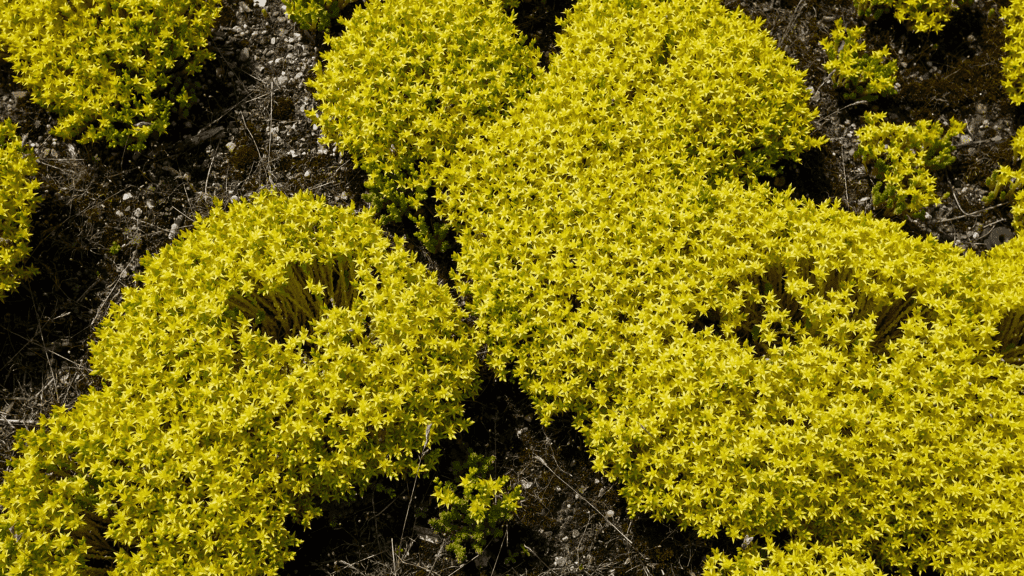
Sedum is a genus of around 600 species of succulent plants found in many parts of the world. They are typically small, fleshy, and often brightly colored, and they grow well in dry, sunny areas. Sedum yellow flowers are some of the most popular varieties, known for their beautiful blooms and easy care.
These cheerful flowers add a splash of color to any garden and make an excellent addition to rock gardens, containers, or as ground cover.
Sedum is a flowering plant from the Crassulaceae or stonecrop family, which includes many succulent plants. They are easy to grow, extremely tolerant of harsh conditions and look stunning with their yellow flowers in the summer months.
2. Aloe Vera
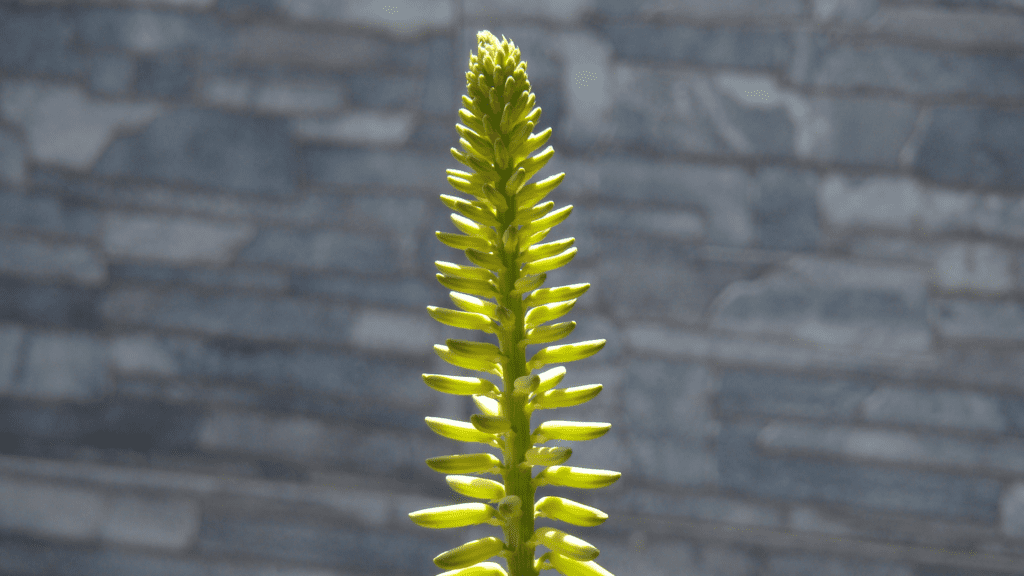
Yellow flowers are an attractive feature of the Aloe Vera plant. Although this plant does not like the sun, it thrives under grow lights. This type of plant has thin, long, and grayish-green leaves that are slightly pointed at the tip. The flowers are held on peduncles. It is native to Madagascar, Tanzania, and Mozambique.
The Aloe microstigma is a large, evergreen plant that forms decorative rosettes. The rosette is covered with spines that are reddish-brown. When damaged, Aloe microstigma leaves emit a cinnamon-like smell. Its flowers are yellow-orange, 3 feet tall, and bloom profusely.
The flowers are not edible for humans, but they are great for giving to loved ones. The Aloe Vera plant has a long history of medicinal use and its leaves are used to treat burns and cuts. The Aloe Vera flower is one of the most common varieties in the Aloe family.
3. Prickly Pear Cactus

The prickly pear cactus are beautiful. They range in color from white to yellow, orange, and even red. When the flowers bloom, they only last for a day or two; however, each flower contains both male and female reproductive organs.
During the brief time that it is open, bees visit the flower to collect pollen. Once the flower closes, it produces fruit that looks like a large green pear with small spines on its surface.
Prickly pears are an important food source for many animals.
Even after their fruit is gone, the pads of these cacti are still used as a food source by many desert animals including deer, sheep and javelina (wild pigs). Check out other cool desert plant photos:
Ocotillo Plant Photo The ocotillo (Fouquieria splendens) is an unusual-looking plant that grows in arid regions of Mexico and southwestern America . It has tall, woody stems that can grow up to 20 feet tall.
Prickly pear cactus yellow flowers are native to North America and thrive in hot, dry climates. The cactus produces a large, fleshy fruit that is often used in Mexican cuisine. The flowers of the prickly pear cactus are large and showy, and range in color from yellow to orange.
4. Echeveria
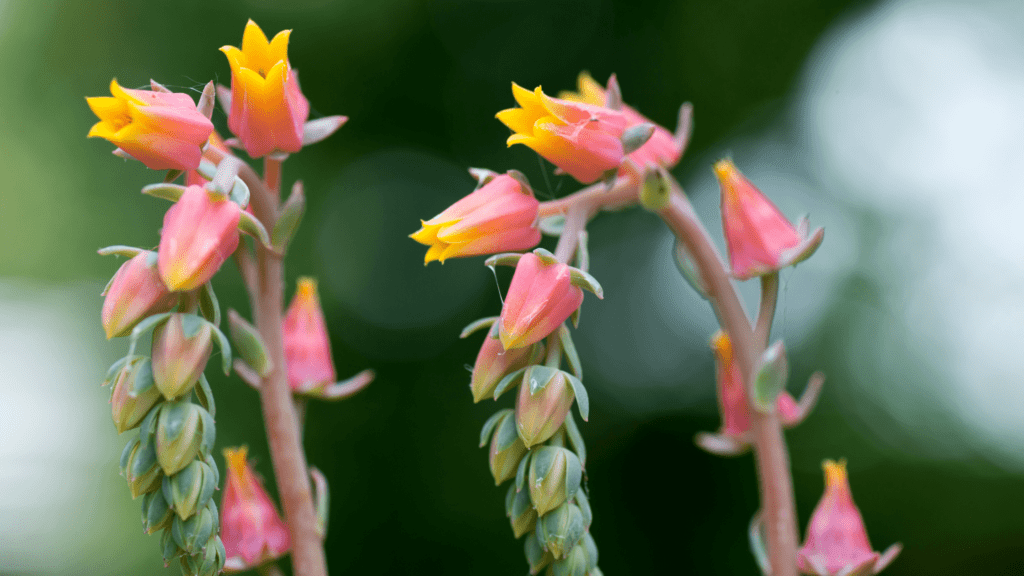
If you’re looking for succulents with yellow flowers, Echeveria Runyonii is one of the best choices. This species has rosette-shaped foliage and yellow/orange flowers. It can grow up to 8 inches tall and bloom throughout the year.
Yellow is a cheerful color and a good choice for a succulent collection. It can brighten up any garden or home by making it look vibrant and cheery. These plants also make beautiful additions to plant walls or fairy gardens. A backyard oasis would also look wonderful with a collection of yellow succulents.
5. Aeonium Kiwi
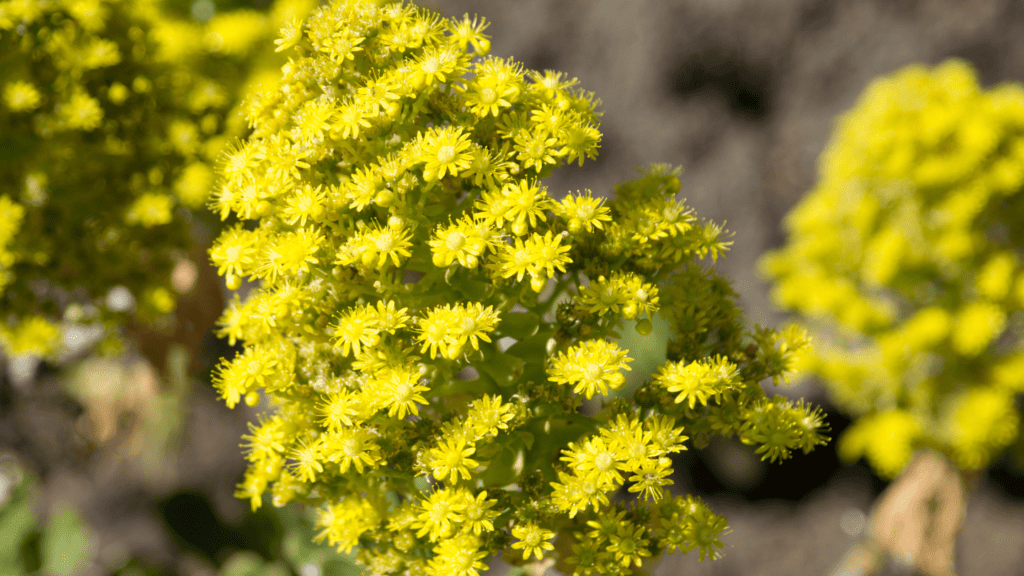
Aeonium kiwi succulents come in rose, yellow and green colors. They are suited for hanging baskets or containers and grow to be between two and three feet tall. The plants feature tri-colored foliage and yellow star-shaped flowers. The plants can also be grown in raised planters.
When you grow Aeonium Kiwi succulents, you will have to be careful not to overwater them. The soil should remain mostly dry. It is good to plant Aeonium in containers that have adequate drainage. They can also be propagated year-round. The plants are easy to propagate.
You should water your aeonium kiwi succulents once every three to five days during the active growing season. During the winter months, you should water the plant less frequently. Make sure that the soil doesn’t dry out as this will cause root rot, which can kill the plant. Aeoniums can be propagated from cuttings. To do so, you should cut the stems at least one inch below the soil level.
6. Emory’s Barrel Cactus
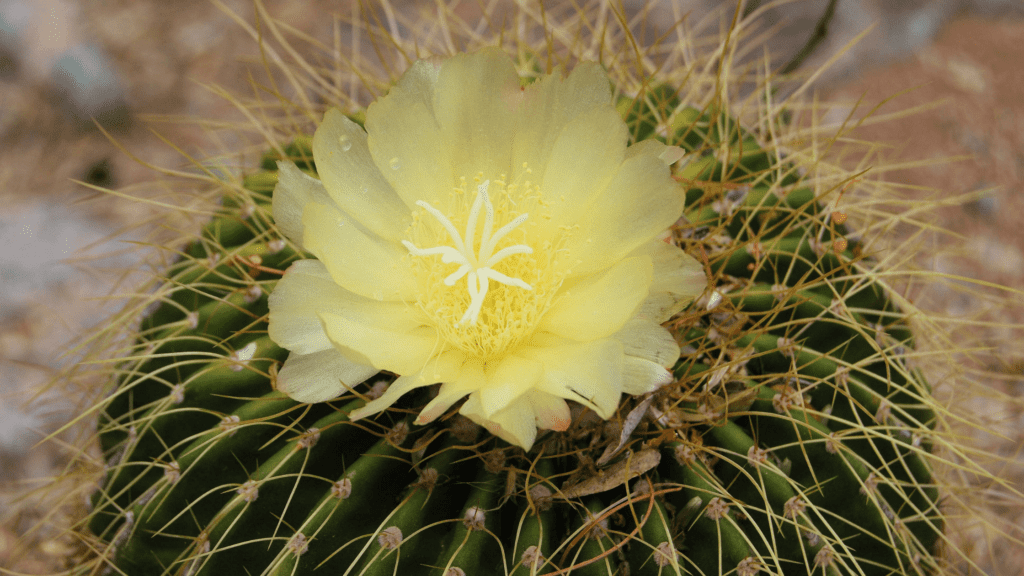
Emory’s Barrel Cactus is a low-growing, succulent plant that is adapted to grow in semi-desert and subtropical regions. It grows best in soil that is moist but drained well. It is easy to care for, and requires little to no pruning. It produces edible fruits, which are gathered when red and eaten by humans. Emory’s Barrel Cacti can be propagated by grafting.
This solitary cactus has a green stem with between fifteen and thirty red spines, a distinctive notch in the center and five to eighty ribs that run the length of its stem. The yellow or red flowers on this species are held in funnels at the ends of the stems. Unlike its close cousins, Emory’s Barrel Cactus has yellow or red flowers.
Emory’s Barrel Cactus needs only one fertilizer in the growing season, but you can give it a slow-release fertilizer in the spring and fall to help it thrive. The fertilizer should contain low concentrations of nitrogen and potassium. Fertilize with caution and always make sure that the plant does not receive too much fertilizer. If the base of the plant turns yellow, you may have over-fertilized it.
7. Florist Kalanchoe
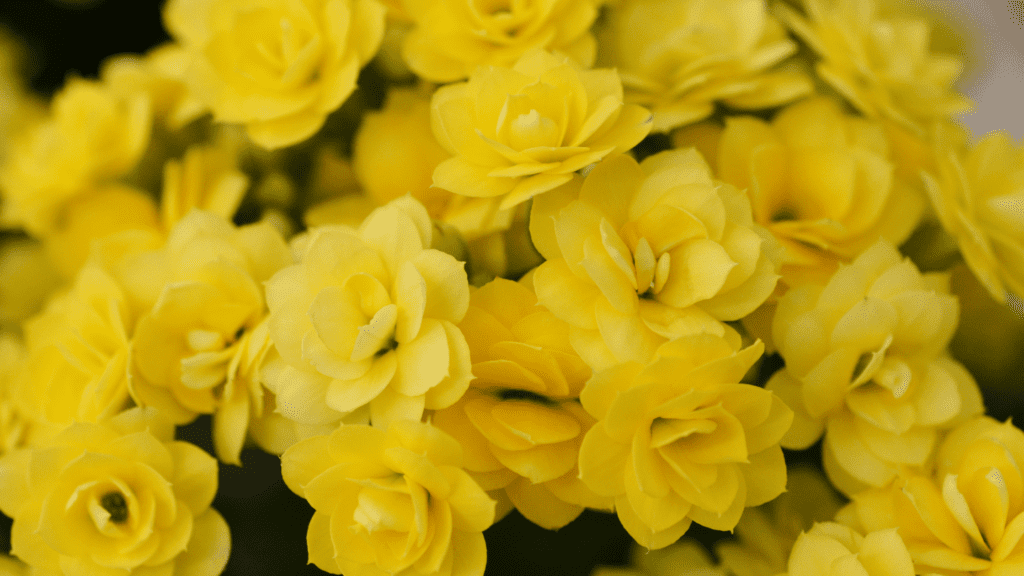
If you’re looking for a beautiful succulent with yellow flowers, consider buying a Florist Kalanchoe. This succulent is very common and can be found in many grocery stores and succulent shops. These plants bloom multiple times each year and can withstand a 12 hour period of darkness. They make a great addition to a container garden.
The Kalanchoe is a plant with long, woody branches that produce yellow flowers. It is also a great choice for indoors, with its foliage turning vibrant red in cool temperatures. There are several varieties of Kalanchoe, including long flower kalanchoe and millotii, which both produce yellow flowers. The leaves of Kalanchoes have glandular hairs and serrated edges.
The flowers on a Kalanchoe can be beautiful and intricate. These plants can produce up to fifty flowers a year. However, they are poisonous to humans and pets. When eaten, Kalanchoe flowers can lead to diarrhea and vomiting.
8. Golden Barrel Cactus

The Golden Barrel Cactus is a unique plant with yellow flowers and spines that spiral around its crown. It blooms when it is about fourteen years old, and is grown for its architectural value. Its yellow flowers are very popular in contemporary landscaping and modern home decorating.
This cactus is prized for its award-winning blooms. The flowers are about two inches across and form a ring at the top of the plant. The plant can grow up to six feet across and is usually leaning toward the south. It needs full sunlight and phosphorus-rich fertilizer during the growing season. It prefers soil that drains well. Soggy soil can cause root rot.
The Golden Barrel Cactus is a slow-growing plant that needs at least six hours of direct sunlight a day. Though it grows slowly, it can live up to 20 years if the conditions are right. It requires bright light and soil that does not get too wet. If you place it in a water-logged pot, it will die.
During winter, it is important to protect golden barrel cacti from freezing, which can cause the plants to melt. In addition, moist soil can lead to fungal infections and tissue rot. This will make the plant soft and prone to falling over. Aside from the flowers, golden barrel cactus is hardy and can thrive in most soil types. It can be propagated by cuttings or seeds.
9. Ferocactus
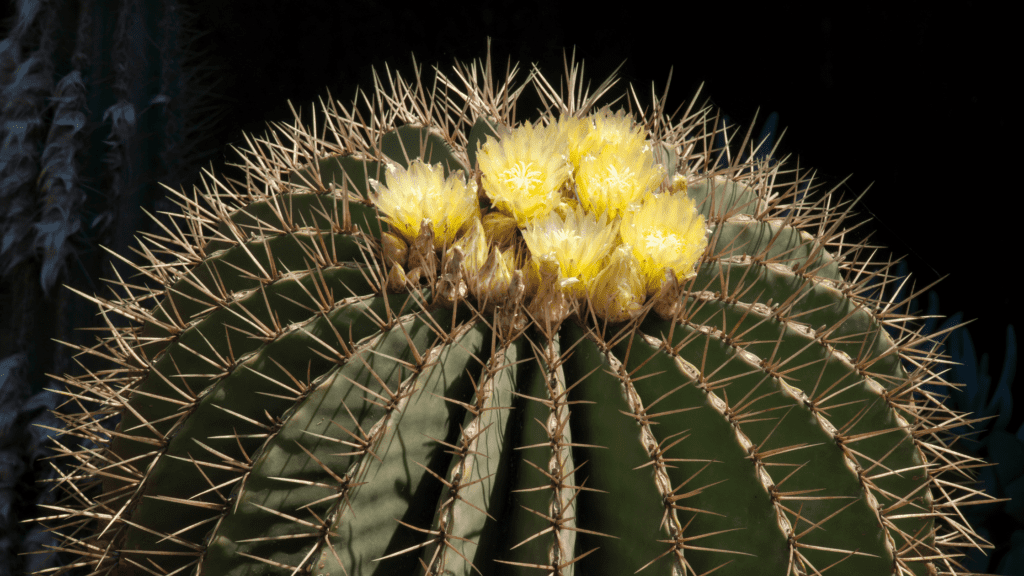
Ferocactus is a genus of large cacti native to the deserts of the southwestern United States, Mexico, and Central America. They are commonly known as barrel cacti. The genus is currently composed of 33 recognized species, all of which are characterized by their thick, fleshy stems and large spines.
Ferocactus are popular garden plants, and many cultivars have been developed for use in landscaping. They are also popular among cactus collectors. Ferocactus are easy to grow and care for, and they make excellent specimen plants.
When grown indoors, Ferocactus require bright light and good airflow. They should be watered sparingly, allowing the soil to dry out completely between waterings. They are tolerant of a wide range of temperatures and can be grown in any type of well-draining potting mix.
Like all cacti, Ferocactus are susceptible to mealybugs and other pests. They can also be damaged by excessive watering or too much direct sunlight.
10. Yellow Calandiva
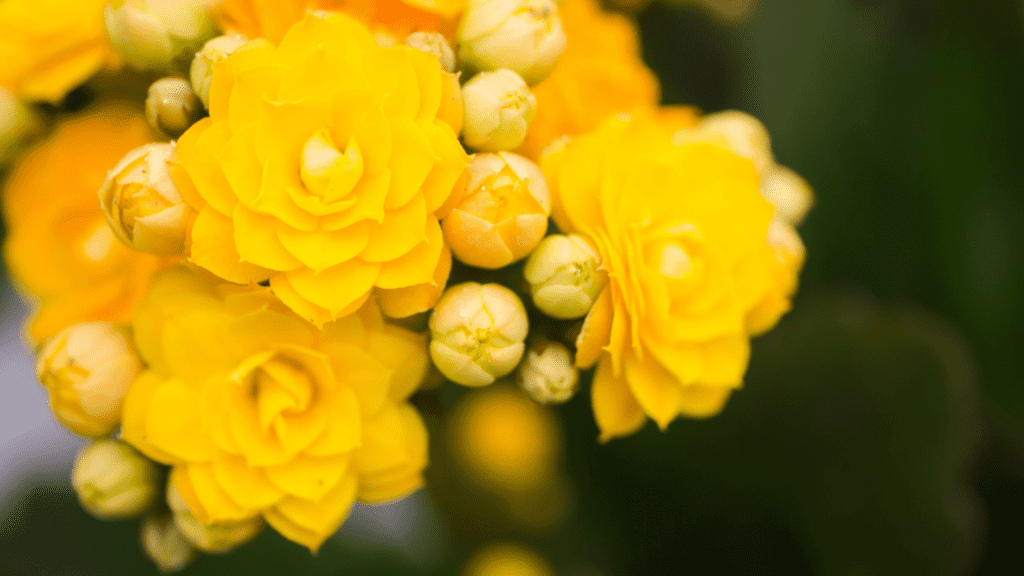
The calandiva plant is native to Brazil and gets its name from the Brazilian state of Minas Gerais. Calandiva plants are easily recognizable by their bright yellow flowers. These flowers bloom all year round, making calandivas a popular choice for indoor decoration.
If you are looking for a plant that is sure to brighten up any room, look no further than the yellow calandiva! This cheerful plant has vibrant yellow flowers that are sure to add a touch of sunshine to any space.
The yellow calandiva is also known for being a low-maintenance plant, making it the perfect choice for those who don’t have a lot of time for gardening.
11. Mammillaria Melaleuca

This low-growing succulent has yellow funnel-shaped flowers and is native to the region of Tamaulipas, Mexico. It is associated with Dolichothele and has large, fleshy roots. Its flowers are large and yellow, and it clusters readily in its native habitat. It is an easy plant to grow, and it needs plenty of airflow and light to thrive.
Mammillarias benefit from a good potting mix that provides drainage and root aeration. You can use a cactus-specific fertilizer, or make your own mix by mixing water-soluble fertilizer with a mixture of 70% to 80 percent mineral grit. The best type of fertilizer for mammillarias is a 5-10-5 solution. Make sure not to overwater these plants, as over-watering can cause root rot.
Mammillaria is a genus with many species, so the classification is a bit confusing. Many species exhibit variation due to weather, terrain, soil, and other ecological factors. Because of this, the names for some species have changed over the years. Some species have been merged into other genera and others have been confirmed as distinct species.
Mammillaria is a genus of cacti with approximately 200 recognized species. Most species grow in Mexico, with some also occurring in the southwestern U.S., the Caribbean, Venezuela, and the Pacific Northwest. These succulents have small, globular leaves and a variety of spines, including spines, which are bristle-like or hair-like.
Succulent Care
Whether you want a succulent that flowers in April or a plant that has gorgeous yellow blooms all year round, these plants can add a unique look to your landscape. These plant are best suited for a garden or ground setting, and they will last for years. Yellow flowers can be found on a variety of varieties, including the Florist Kalanchoe, which is commonly sold in flower sections of stores. These plants need plenty of light to bloom successfully, but they can also be kept in a dark place for 12 hours every day.
Flowering succulents should be given plenty of light and water. Unlike cacti that only bloom once, they can bloom more than once throughout their life cycle. If you can’t afford to grow them outdoors all year, you can try indoors with a grow light. The extra light helps trigger the flowering process.
To ensure the flowers are healthy and beautiful, be sure to harvest the stems and leaves at the proper time. If the flowers are still green and in good condition, they can be planted in succulent potting mix. Be sure to plant the cuttings in indirect sunlight. Once the cuttings have grown a few days, they can be transplanted into a pot and kept in a sunny area.
While watering succulents, make sure you water them just enough to allow the potting mix to dry out. Don’t water them too much, as this can result in brittle roots and moldy leaves.
Conclusion
If you are looking for a plant with yellow flowers, there are many options to choose from. Some of these plants can tolerate bright light and can be grown indoors, while others need to be grown outside. In either case, the key is to choose a succulent that will thrive in a sunny environment.
Some succulents are known for their beautiful yellow flowers. Others have dark, textured leaves. However, they all have one thing in common: they are plants that need some type of soil to survive. These plants typically need to be planted in a sunny area or a container that is deep enough to accommodate their roots.
